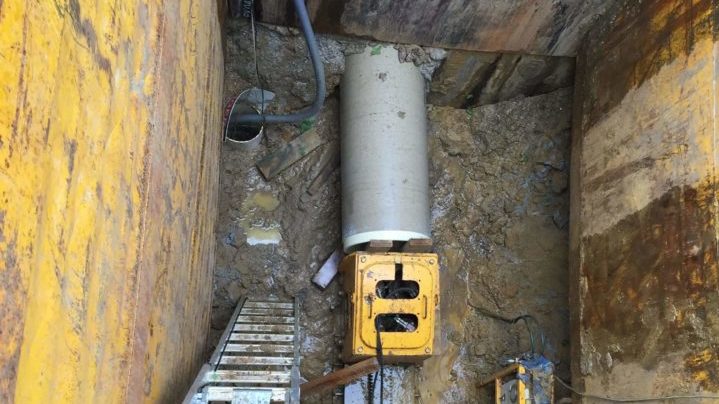In the past, gravity slope sewer lines were installed via open cut or tunnelling methods. Today there are two main methods of trenchless sewer construction: horizontal directional drilling (HDD) and microtunnelling.The key is selecting the most appropriate and technically feasible method – the method chosen must be capable of doing the job in the prevailing environmental conditions and within project specifications.
Here are some environmental conditions and project specifications where microtunnelling is the most appropriate method for a gravity slope sewer installation.
An accurate slope
Proper slope of gravity sewer pipes is important to ensure liquids flow smoothly and any solids don’t clog the pipe. If the pipe is too flat, waste won’t flow away and a pump station will need to be installed to help move the liquid, but a pipe that is too steep will cause liquids to flow too quickly and solids will not be carried away.
Therefore, the chosen method of installation will be dependent on the ultimate grade on that line and the accuracy required to complete the installation.
Microtunnelling is the most accurate pipeline installation method available for civil construction and can install sewer pipelines on-grade, so if the installation needs to be within +/-25mm of accuracy it is the best method.
On-grade installation ensures a steady declining grade is maintained, allowing sewage to be transported down the pipeline by gravity alone.
On the other hand, sewer pipes installed by HDD can incorporate variations throughout the route, and will require pump stations to be installed to ensure the continuous transportation of liquids. These pumps incur additional cost, require ongoing maintenance, consume energy and produce emissions.
Avoiding critical underground infrastructure
As gravity slope sewer lines are installed in urban areas, there is a risk of hitting existing critical underground infrastructure if it is not accurate.
Microtunnelling avoids this risk because the installation will typically go from a manhole to a manhole, or a manhole to an inspection shaft of some sort. Microtunnelling gives you a means of working out of both shafts to install a pipe at the best invert rate required, which in most instances will be completely below all existing infrastructure.
Working in a limited site footprint
Microtunnelling is also the best choice for urban areas where the site footprint has to be kept to a minimum.
Microtunnelling allows a pipeline to be installed from an exact location to an exact location with only enough room for an entry and exit pit to be excavated. This means there is no need for access to any other land as the pits will be along the required pipe route.
As HDD is surface launched, the equipment needs to sit back from the starting point, and because it uses a continuous style of pipe there also needs to be enough room at the exit point to have the pipe laid out.
This can become a problem in urban areas as there is not much space to work in, and depending on the route of the pipe there is a chance that the necessary setback will mean the HDD rig would need to be on someone’s property. At the exit point there may also be limited room where the pipe can be laid out.
Making a choice
When it comes to choosing a method of installing gravity slope sewer lines it is important to take into account the environmental conditions at the site and the project specifications as there may be factors present that will make one technology better than another. Microtunnelling is only one method of installation but it’s ability to install pipelines on-grade, its limited site footprint and ability to avoid existing underground infrastructure makes it an ideal choice.

